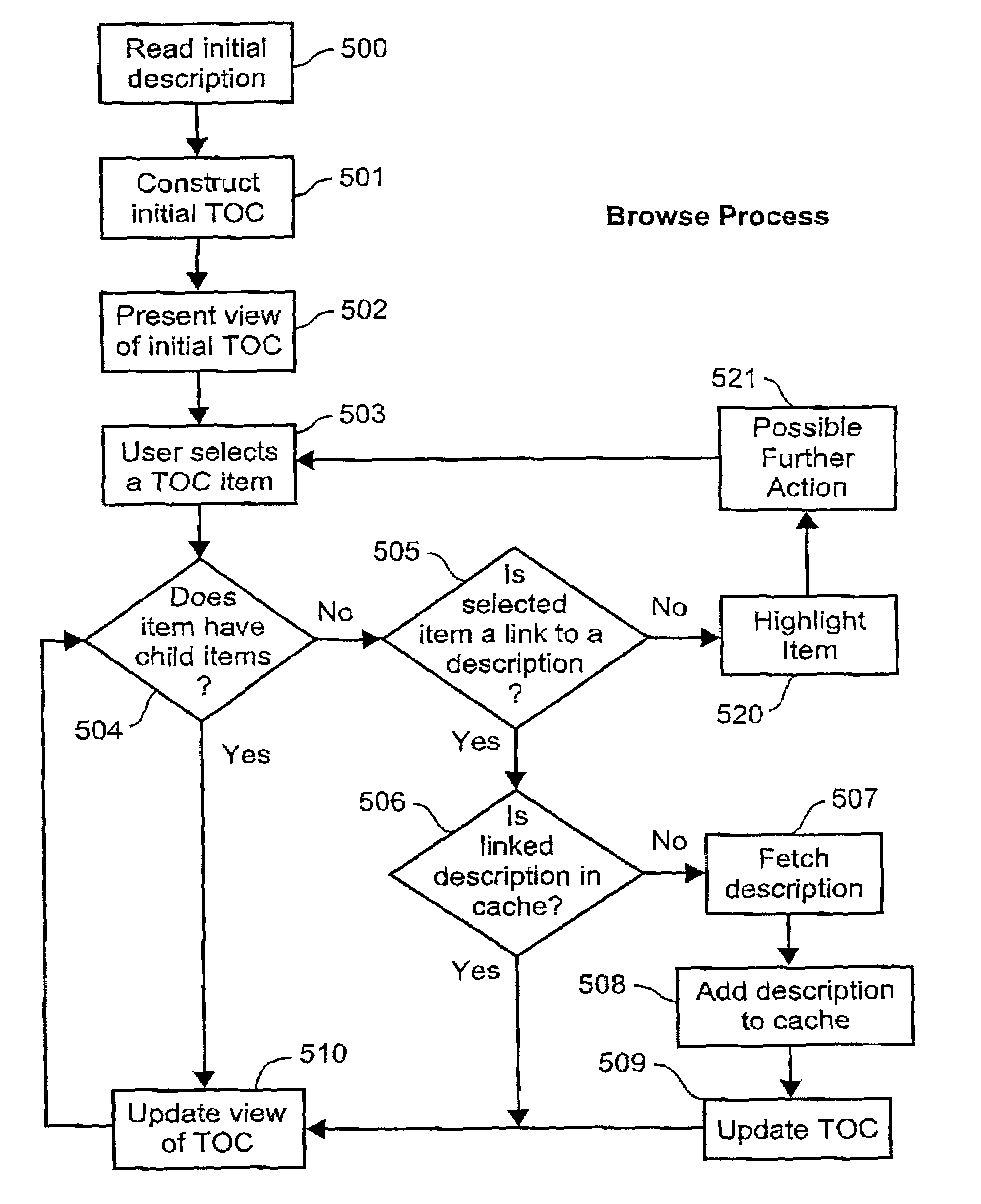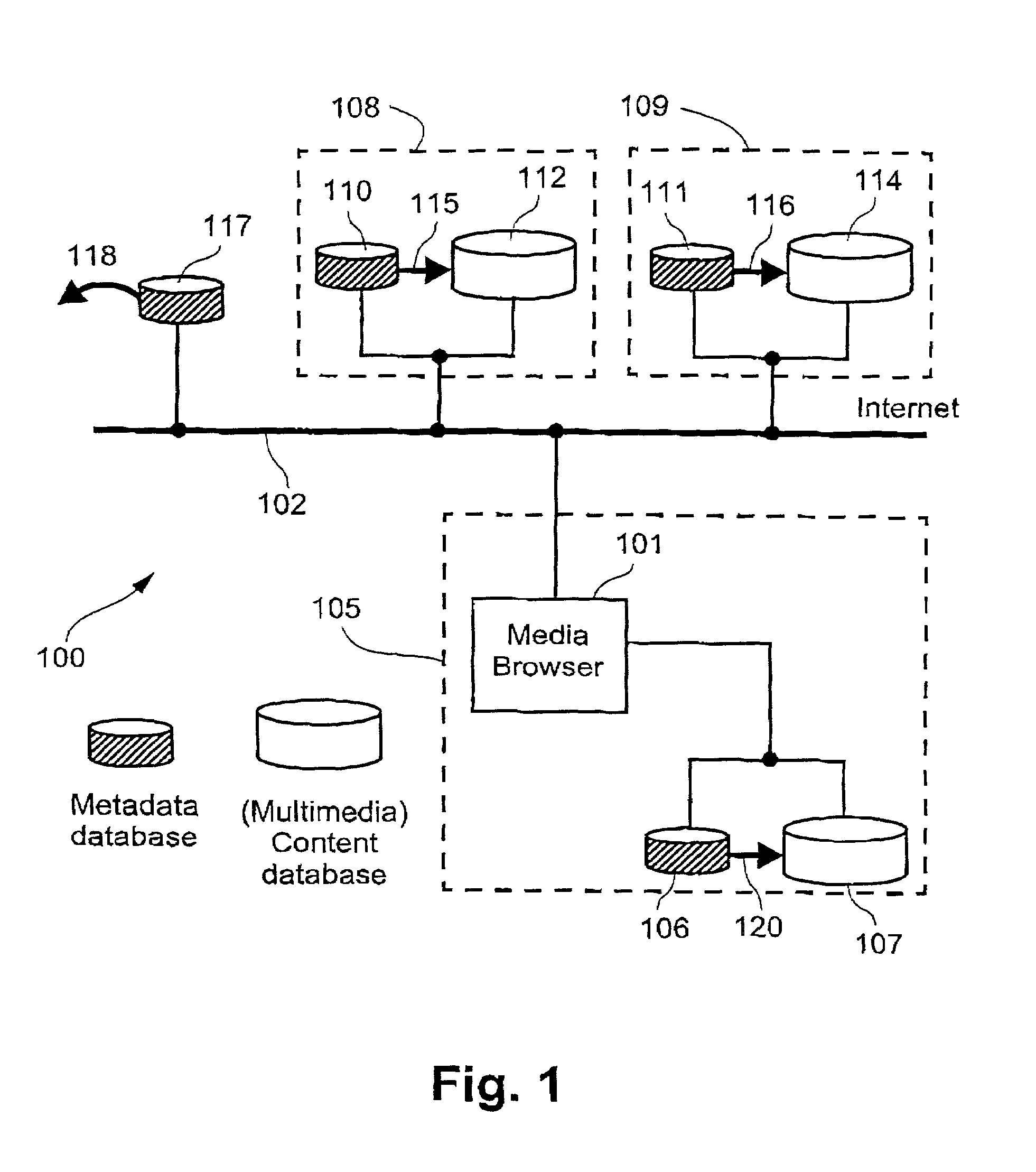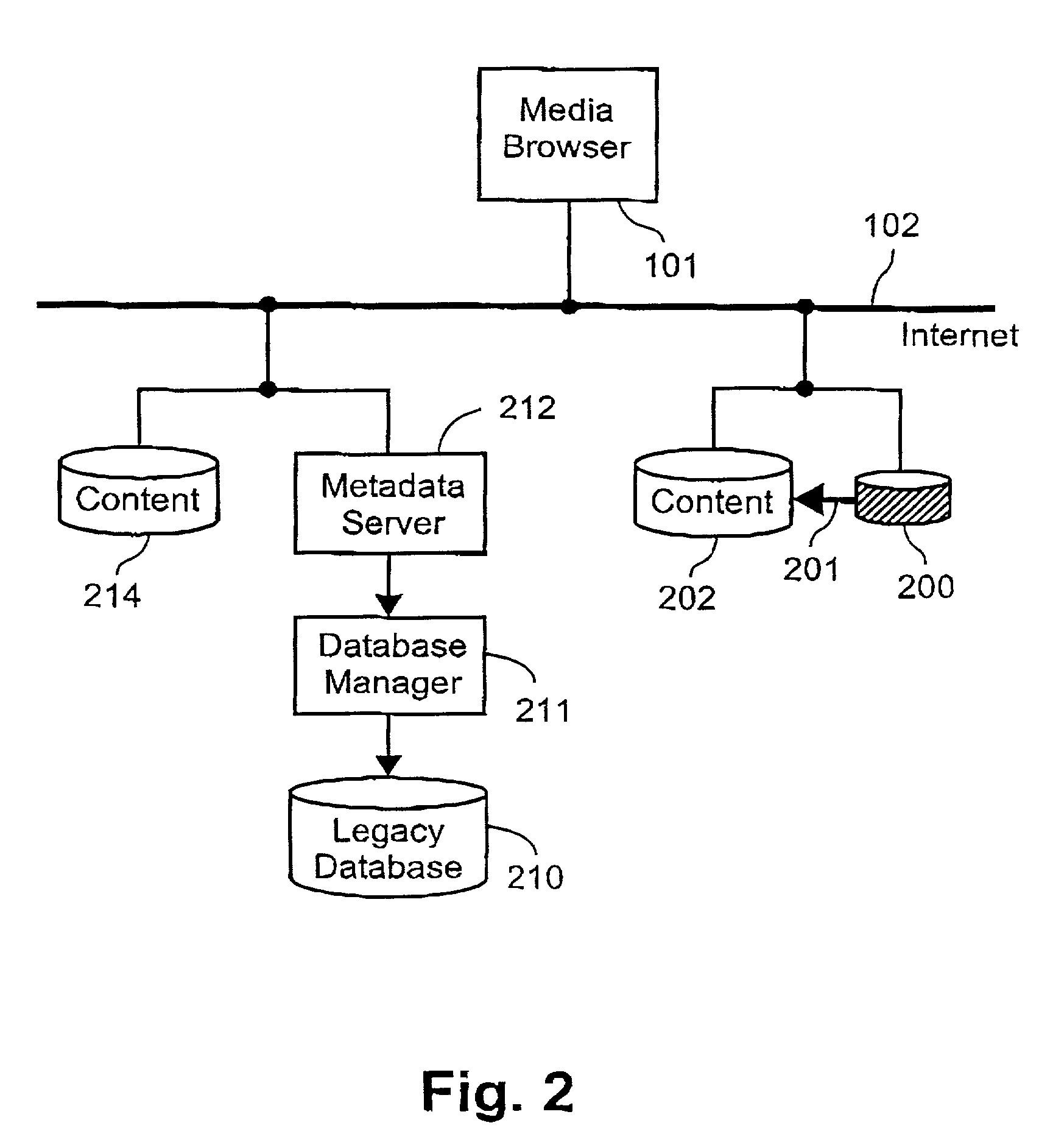Method for facilitating access to multimedia content
a multimedia content and access technology, applied in the field of facilitating access to multimedia content, can solve the problems of time-consuming and annoying actions, approach has its own problems, and multimedia content is not directly accessible to standard web search engines
- Summary
- Abstract
- Description
- Claims
- Application Information
AI Technical Summary
Problems solved by technology
Method used
Image
Examples
example h
[0153]In Example H above, the URI targets of the return links to the metadata server 212 contains the ‘[’ and ‘]’ characters. In general, according to RFC 2396, it is unwise to leave these characters unencoded in a URI because they can be excluded by some gateways and transport agents. The characters have been left unencoded in this and the following Examples for ease of reading.
[0154]If, for example, the visual identifier for the ‘Sports’ category was selected when the XML fragment shown in Example H was processed and presented to the user, then the corresponding returning link to the metadata server would be actuated. The metadata server 212 would respond to this link by generating and returning a description fragment as now indicated below in Example I.
[0155]
EXAMPLE IReturned XML Description Fragment1.2.requestID = ‘19999124’3.noItemsIdentified = ‘1200’4.startItemReturned = ‘1’5.noItemsReturned = ‘100’>6.7.textIdentifier = ‘Basketball’8.xlink:href = “http: / / mySite / myMetadataSvr?C...
PUM
 Login to View More
Login to View More Abstract
Description
Claims
Application Information
 Login to View More
Login to View More - R&D
- Intellectual Property
- Life Sciences
- Materials
- Tech Scout
- Unparalleled Data Quality
- Higher Quality Content
- 60% Fewer Hallucinations
Browse by: Latest US Patents, China's latest patents, Technical Efficacy Thesaurus, Application Domain, Technology Topic, Popular Technical Reports.
© 2025 PatSnap. All rights reserved.Legal|Privacy policy|Modern Slavery Act Transparency Statement|Sitemap|About US| Contact US: help@patsnap.com



